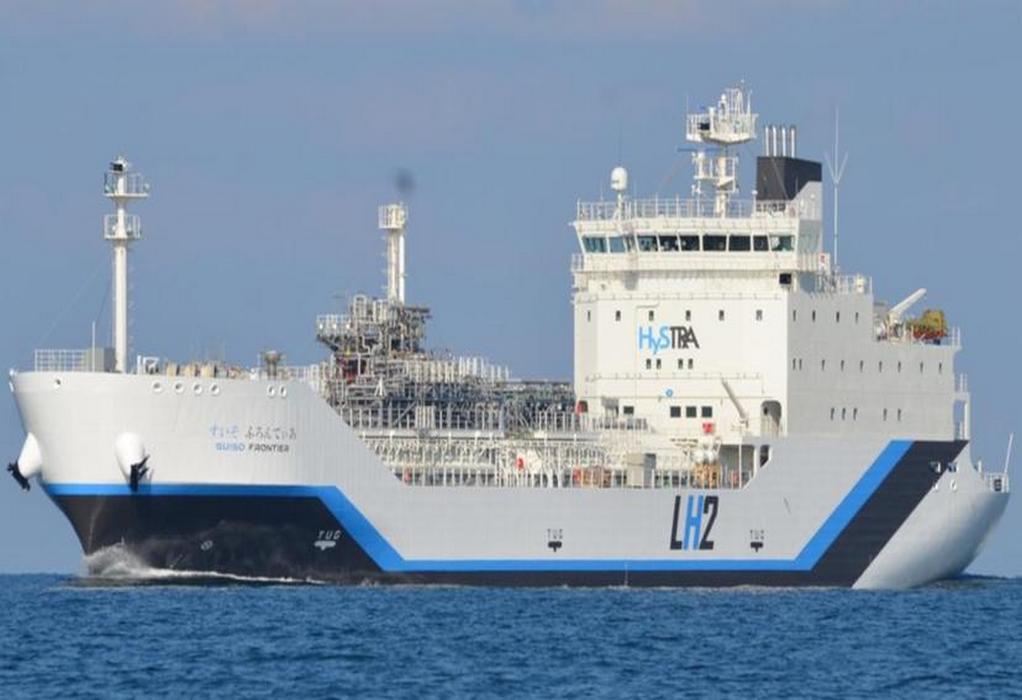Australia’s first commercial shipment of super-cooled liquid hydrogen will soon be on its way to Japan, project partners say.
Scientists at CSIRO have been working with industry on the first stage of a $500 million hydrogen energy supply chain (HESC) project as the next phase for Victoria’s coalfields.
Australia is separated by more than 1500km from the future hydrogen markets of North Asia, requiring new technology for shipping as well as hydrogen production.
The arrival of the new liquefied hydrogen carrier Suiso Frontier in Victoria’s port of Hastings marks “the dawn of Australia’s hydrogen industry”, Kawasaki Heavy Industries spokesman Yuko Fukuma told AAP on Friday.
The loading of the carrier for the return journey to Kobe will make it the most advanced hydrogen project in Australia, and the first in the world to make, liquefy and transport liquid hydrogen by sea to an international market, he said.
The carrier’s propulsion system is diesel-electric and the liquid hydrogen that will fill its high-tech tanks is made from Latrobe Valley coal and biomass feed stock.
Another project, CarbonNet, is key to making the new export “carbon neutral”.
CarbonNet is designed to be a commercial-scale carbon capture and storage (CCS) network that captures emissions from industries in Victoria’s Latrobe Valley, including hydrogen production, and sends them via an underground pipeline to offshore storage sites in Bass Strait.
The federal government announced on Friday an additional $20 million for the next stage of the CarbonNet project, contingent on new funding from the Victorian and Japanese governments as well as HECS business partners.
Prime Minister Scott Morrison also said an additional $7.5 million would support the next phase of the HESC project, which aims to produce 225,000 tonnes of liquefied hydrogen each year.
The government estimates that will reduce carbon emissions by 1.8 million tonnes a year – or the equivalent of taking 350,000 petrol cars off the road.
“The HESC project puts Australia at the forefront of the global energy transition to lower emissions through clean hydrogen, which is a fuel of the future,” Mr Morrison said.
“A successful Australian hydrogen industry means lower emissions, greater energy production and more local jobs.”
The project is expected to create 30,000 full-time jobs across the Gippsland and Mornington Peninsula regions when it scales up.
During the pilot phase, the 99.999 per cent pure hydrogen has been produced, cooled to minus 253C and liquified to less than 800 times its gaseous volume to create liquefied hydrogen.
Over the next two years, there will be more trips between Australia and Japan, and more research to reduce costs and carbon intensity.
Biomass feed stock for hydrogen production, blended with Latrobe Valley coal, will be fine-tuned.
Other proponents of hydrogen as a future hero fuel are developing non-fossil fuel production methods.
The HESC partners believe using coal resources is essential for scaling up hydrogen supply chains, especially in the short to medium term.
The project partners are Kawasaki, J-Power, Iwatani, Marubeni, AGL Energy and Sumitomo.
Shell, ENEOS Corporation and K-Line are also involved on the Japanese side of the project.
Source: https://7news.com.au/
Tags: Asia, CSIRO, Liquid Hydrogen



Recent Posts
Port of Brisbane Unveils Vision 2060 to Drive Smarter, Cleaner, and More Connected Future
Wärtsilä to Deliver Hybrid Propulsion Systems for Vertom Group’s New Low-Emission Vessels
Latvian port receives electric Konecranes Gottwald Mobile Harbor Crane
Sustainable Ocean Economy Vital for Human Development, Says UNDP at UN Ocean Conference
Green Hydrogen Costs in India Could Drop by 40%, Says IEEFA-JMK Report
Cavotec Secures €1.55 Million Shore Power Contract for Port of Antwerp-Bruges
APM Terminals and SANY Marine sign landmark agreement to accelerate decarbonisation
The Port of Gothenburg takes big step towards shore power connection for container and car/RoRo vessels